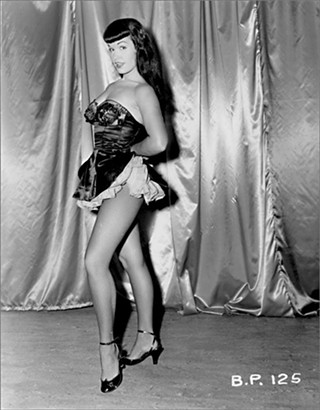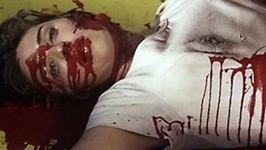Moving Violation
Classic sexploitation films Shake things up at the Alamo
By Richard Whittaker, Fri., Oct. 7, 2011
What would Will H. Hays say?
In 1930, American cinema audiences must have been suffering some kind of mass fainting spell from the tide of sex, perversion, and violence that was twisting their minds. That's when the Motion Picture Producers and Distributors of America stepped in to curb the sin by creating the Motion Picture Production Code. Better known as the Hays Code – named after the body's then-head and former Republican National Committee Chair Hays – its restrictions on representations of moral turpitude were supposed to keep the masses chaste, with one foot on the bedroom floor at all times. Ah, but there was a rogue's gallery of directors determined to flaunt those edicts and highlight their transgressions. The UCLA Film & Television Archive has long been collecting the evidence, so to speak, and it's from that archive that the Alamo Drafthouse has culled its program for They Wear No Clothes, a monthlong series of scintillating, code-busting classics on the original 35mm and 16mm film prints.
And what would Hays say about that?
He might say that 1938's Child Bride, with its infamous scene of 12-year-old Shirley Mills skinny-dipping, clearly violates Section 2, Article 9 ("Children's sex organs are never to be exposed"), while the disturbingly sexualized attempted tar-and-featherin' of school teacher Carol (Diana Durrell) would have him flicking to Section 2, Article 3a ("Seduction or Rape ... should never be more than suggested, and only when essential for the plot, and even then never shown by explicit method"). Hays would probably have thrown a conniption fit over director Dwain Esper's bad case of Sex Madness, a quasi-documentary trip through the world of showgirls, burlesque, and the inevitable lustful endeavors (Sleepovers! Implied lesbianism! Second base in the cheap seats!). As one reprobate drunkenly cheers, "Bed's not for relaxing; that's for action!"
So how could filmmakers get away with such salacious entertainment? By donning their school uniform and claiming they were educational. Any possible suggestion of titillation in Child Bride is dampened by several debates about the sociological and moral benefits of raising the age of consent. The same goes with Sex Madness: Unless morality lessons about syphilis, skin lesions, and quack doctors peddling snake oil float your boat, then this is not a first-date movie. Even then, this is another Hays Code no-no (Section 2, Article 7: "Sex hygiene and venereal diseases are not subjects for motion pictures").
And what of Varietease? In 1954, cheesecake connoisseur and fetish photographer Irving Klaw re-created a classic variety show for the camera. Much of its running time is taken up with bad puns, forgotten singers, and comics in baggy pants. However, it is the burlesque performances by unclad icons Bettie Page and Lili St. Cyr that would have raised Hays' blood pressure. Should it have been Section 6, Article 4 ("Dancing or costumes intended to permit undue exposure or indecent movements in the dance are forbidden") or Article 2 ("Undressing scenes should be avoided, and never used save where essential to the plot")? For Ruby Joule, co-founder of Austin's Jigglewatts Burlesque troupe, those are the moments that should be studied. When it comes to re-creating classic burlesque, Joule said, "We don't really have a compass." That makes films like Varietease and the ultra-rare short "The Body Beautiful" a peep through the keyhole into "the style of movement and the style of costuming and the look in the eyes."
The series They Wear No Clothes runs throughout October at the Alamo Drafthouse at the Ritz, 320 E. Sixth. See Film Listings for showtimes.












